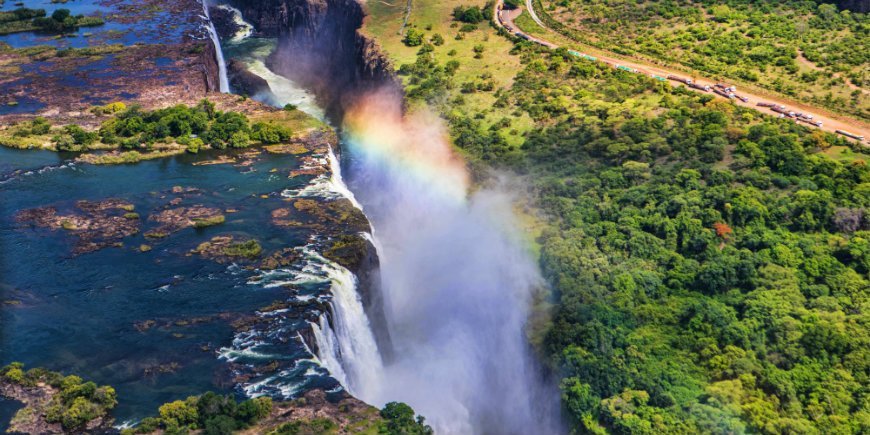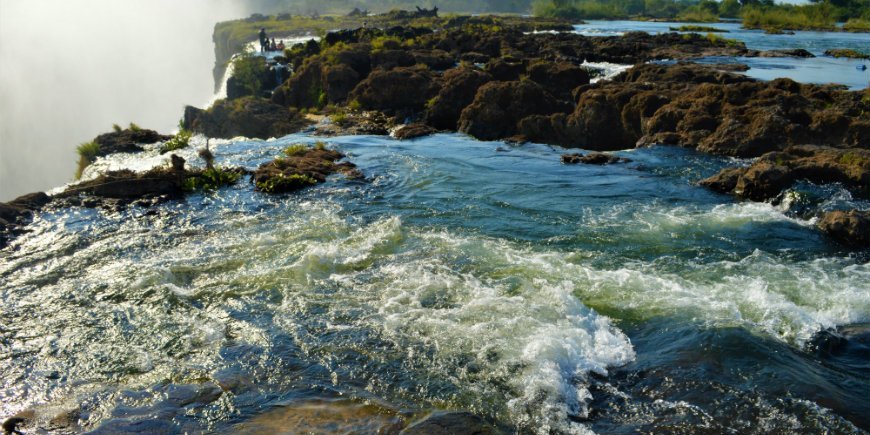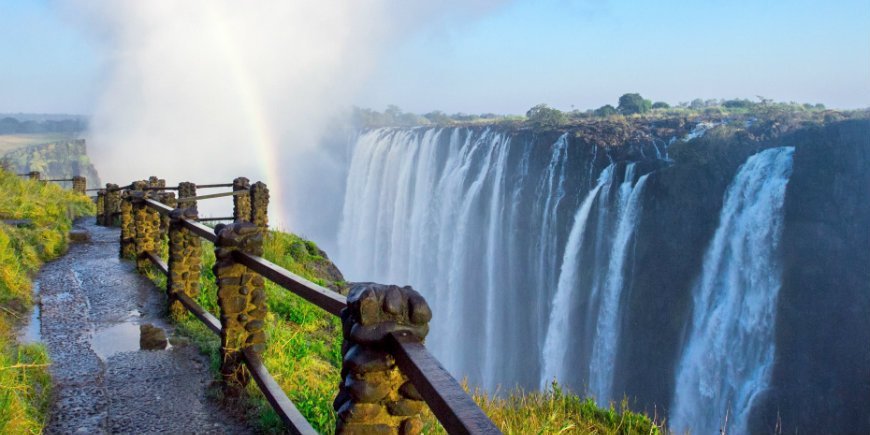When is the best time to visit Victoria Falls?
05.02.2020
The spectacular Victoria Falls is certainly an impressive sight.
Victoria Falls is located on the border between Zambia and Zimbabwe, and with a width of 1,700 metres and a massive drop of 108 metres, it is one of the largest waterfalls in the world. Feel the roar, experience the huge spray and be blown away by the sheer force of nature.
Read more below about the best time to visit the dramatic Victoria Falls.
Climate
The mighty Victoria Falls offers unique experiences all year round.
However, variations in the weather affect temperatures, the flow of water at the waterfall and visibility, and thus also what you can experience. So, it is a good idea to look into when it is the best time for you to travel there.
The climate at Victoria Falls is subtropical, with two primary seasons: a rainy season and a dry season.
- The rainy season is from mid-November to March.
- The dry season is from April to mid-November.
The seasons are reasonably clearly defined in relation to temperatures and rainfall, however the flow of water at the waterfall changes in relation to the seasons.
| Month | tHE FLOW OF WATER AT THE WATERFALL |
| JAN | Slow |
| FEB | The water flow increases |
| MAR | God |
| APR | Perfect |
| MAY | Highest |
| JUN | Highest |
| JUL | Good |
| AUG | Normal |
| SEP | The water flow drops |
| OCT | Medium |
| NOV | Slow |
| DEC | Slow |
Rainy season

The rainy season at Victoria Falls is from around mid-November to March.
It is the time of the year when most rain falls, but paradoxically, it is also the period when the flow of water at the waterfall is lowest.
At the beginning of the period, the waterfall is affected by the previous months’ lack of rain, and the flow of water at the waterfall will therefore be slow. When the water level of the Zambezi River is low, it is the ideal time to visit Livingstone Island, where you can stand on the edge of the waterfall and swim in the natural “Devil’s Pool”. These are experiences that are not possible when the water level – and thus the flow of water at the waterfall – is high.
The increased rain in the rainy season gradually causes the water level in Victoria Falls to rise, and the later you visit the waterfall in the rainy season, the stronger the flow will be. The more rain that falls, the more water and heavier the flow in Victoria Falls.
When the flow of water is at its highest, you will experience uninterrupted spray and mist emanating from the huge waterfall. The spray created by Victoria Falls also helps produce the most wonderful, colourful rainbows that can often be seen at the waterfall.
Just because it’s rainy season, it doesn’t mean that it rains all the time – but when the skies do open, it’s usually in the form of heavy showers or thunderstorms.. The temperatures are also at their highest during this period and it can get very hot and humid. If you are interested in birds, the rainy season is also the absolute best time to visit the area.
Dry season

The dry season at Victoria Falls is roughly from April to mid-November.
This period is characterised by being mainly dry and sunny, with very little or no rain at all. The modest amount of rain means that the water level in Victoria Falls drops as the months progress.
If you visit the waterfall at the start of the dry season, you will experience the waterfall at full strength, but the further into the dry season you go, the weaker the flow.
If the dry season is drier than usual, there may be even less water in Victoria Falls, but the waterfall never dries out completely. However, during particularly dry periods, parts of the waterfall – which, let’s not forget, is 1,700 metres wide – may dry out. But when this happens, you have the chance to walk on some of the rocks where the waterfall otherwise rages during the rest of the year. Not only is this an amazing experience, but few people can say that they have done it!
In the months when the water flow is lower, visibility is great, with less spray and less mist – perfect conditions for taking beautiful, clear pictures.
The temperatures are milder and the air is clearer than during the rainy season, and during the coolest months of the period from May to August, it may feel chilly at night.
TourCompass – From tourist to traveller
-
General Info
Receive all the latest news and offers delivered to your inbox!
Registered in England.
Registered Office:
Nucleus House 2
Lower Mortlake Road
Richmond, TW9 2JA
Company no.: 11454726

E-mail: info@tourcompass.co.uk
ATOL protected no. 10558.
ABTA member no. Y6104.
Read more.